Delaware is home to a wide variety of bird species, each with its own unique characteristics. Some birds migrate to Delaware for either the summer or winter seasons, while others choose to reside there all year round. In this essay, we will explore the 24 most commonly spotted backyard birds in Delaware and discover interesting facts about each species.
Additionally, I will share tips on attracting these birds to your property, provide insights on ten different types of bird feeders that can be used, and even suggest some popular birdwatching locations in Delaware.
Determining the exact number of bird species in Delaware, North America, or the United States is challenging. However, according to online sources, Delaware is known to have a minimum of 420 bird species. Different sources provide varying estimates, with North America being credited with 2,059 species by one account and only 914 by another. While these numbers are not definitive, they offer a general understanding of the bird diversity in these regions.
For the purpose of this article, we will focus on a selection of bird species commonly encountered by Delaware residents, particularly in backyard settings.
24 COMMON BACKYARD BIRDS IN DELAWARE
Let’s delve into the fascinating world of Delaware’s backyard birds, exploring a diverse selection of 24 species, including both resident birds and migratory visitors. While this list does not encompass all the bird species found in Delaware, it highlights the ones that frequently grace backyard environments. So, without further ado, let’s begin our exploration!
1. NORTHERN CARDINAL
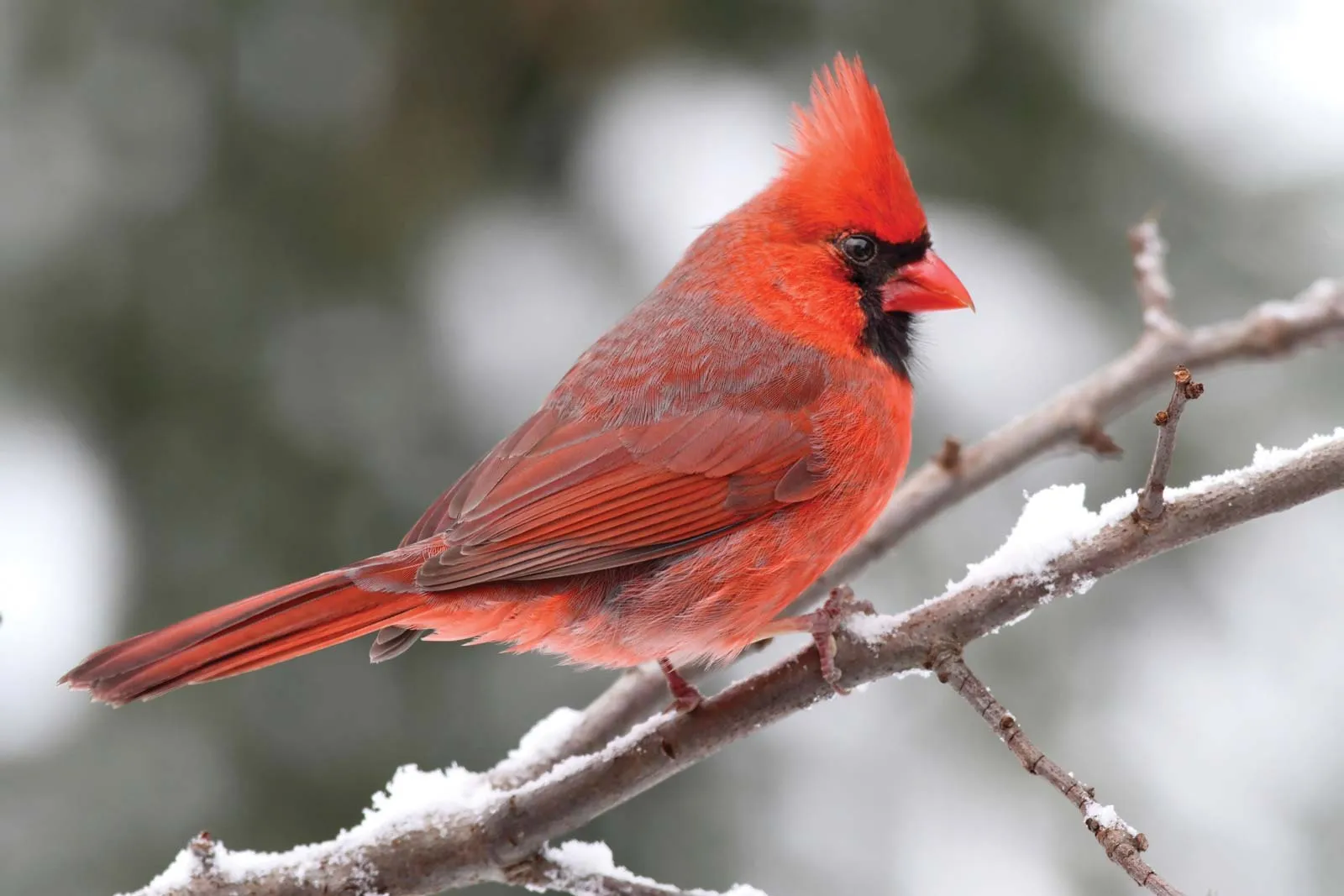
Commonly known as the Northern Cardinal, with the scientific name Cardinalis cardinalis, this species of backyard bird is highly recognizable in North America. Measuring around 8.3 to 9.1 inches in length and weighing approximately 1.5 to 1.7 ounces, these birds boast a wingspan ranging from 9.8 to 12.2 inches.
The Northern Cardinal is renowned for its vibrant appearance. While females exhibit a more subdued plumage with tawny brown tones and hints of red, males showcase a striking ensemble of bright red feathers complemented by a contrasting black mask. Both sexes share a distinguishing crest resembling a mohawk atop their heads, along with reddish-orange beaks.
Delaware residents are fortunate to have Southern Cardinals present throughout the year. These birds are frequent visitors to various seed feeders, showing a preference for mixed seed blends and black sunflower seeds.
2. TUFTED TITMOUSE
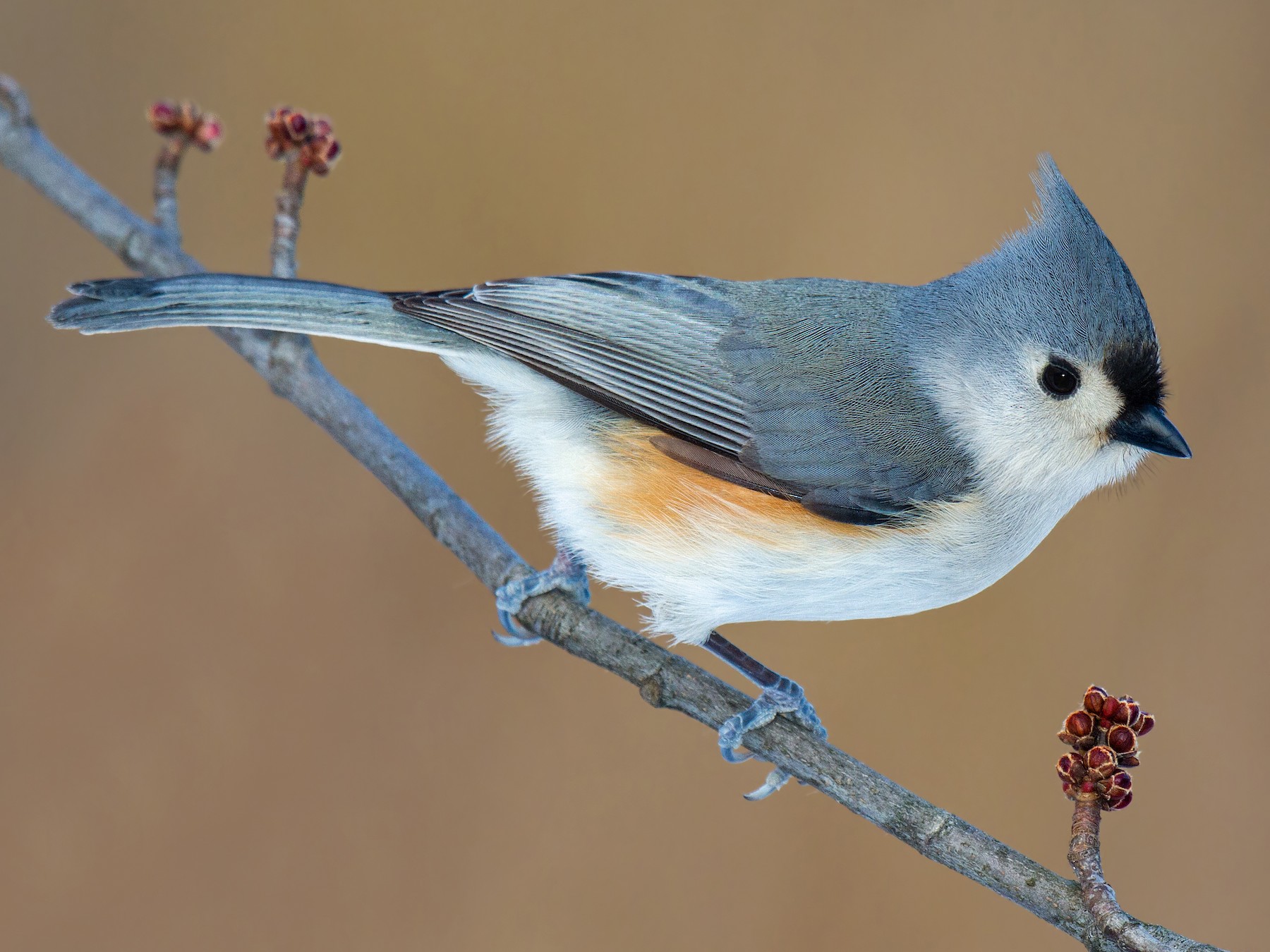
The species with the scientific name Baeolophus bicolor, commonly known as the Tufted Titmouse, is a small bird that frequently appears in yards and around feeders within its habitat. Measuring approximately 5.5 to 6.3 inches in length and weighing around 0.6 to 0.9 ounces, these birds possess a wingspan spanning 7.9 to 10.2 inches.
One distinctive feature of the Tufted Titmouse is its petite mohawk-like crest, reminiscent of the Northern Cardinal, which aids in their identification among other bird species. These birds showcase silver-gray plumage on their upper parts, while their underparts are lighter in color. They also possess a black patch just above their beaks and may occasionally display an orange patch on their side beneath the wings.
Delaware residents have the pleasure of hosting Tufted Titmice throughout the year in their surroundings. These birds are frequent visitors to seed feeders and readily consume a variety of seed mixes, including black sunflower seeds.
3. CAROLINA CHICKADEE
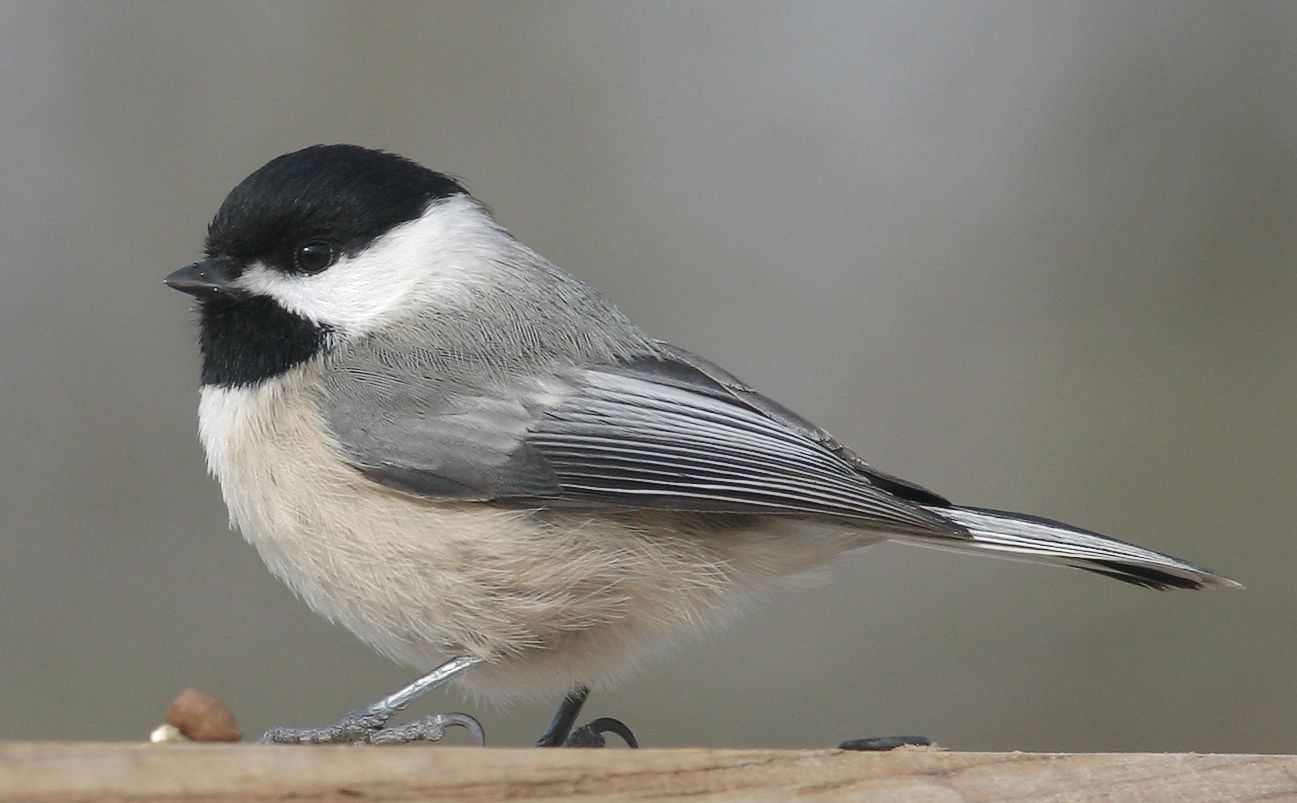
With the scientific name Poecile carolinensis, Carolina Chickadees are small birds that possess distinct features, making them easily recognizable. Measuring approximately 3.9 to 4.7 inches in length and weighing around 0.3 to 0.4 ounces, these birds have a wingspan ranging from 5.9 to 7.9 inches.
Carolina Chickadees stand out with their “black cap” atop their heads and a black bib. Their underbodies are fluffy and light, while their cheeks showcase a solid white coloration. They exhibit gray wings and backs, completing their charming appearance.
In Delaware, Carolina Chickadees are commonly encountered in backyard settings. It’s important not to confuse them with their close relatives, the Black-capped Chickadees, which reside farther north. Carolina Chickadees frequently dart back and forth between feeders and cover, displaying a repetitive behavior in their quest for food. When I introduce a new feeder in my yard, Chickadees are often among the first birds to visit. Their small size gives them an aura of bravery and curiosity.
While Carolina Chickadees can be observed in Delaware throughout the year, they may be less common in the panhandle region.
4. BLUE JAY

Known by the scientific name Cyanocitta cristata, the Blue Jay is a highly recognized bird species in North America and the United States. These birds exhibit distinct features that set them apart. With a length ranging from 9.8 to 11.8 inches and a weight of approximately 2.5 to 3.5 ounces, Blue Jays possess a wingspan spanning 13.4 to 16.9 inches.
Blue Jays are characterized by their predominantly blue heads, adorned with a large blue crest, and white feathers on their underparts. They also sport a distinctive black necklace-like collar around their necks. Their wings showcase white, blue, and black stripes, contributing to their striking appearance. Both males and females exhibit the same coloration.
As year-round residents of Delaware, Blue Jays are commonly found in backyards and frequent feeders. They show a preference for platform feeders, peanut feeders, and feeders with spacious perches. Black sunflower seeds, mixed seeds, and peanuts are among the food options that attract them.
5. RED-WINGED BLACKBIRD
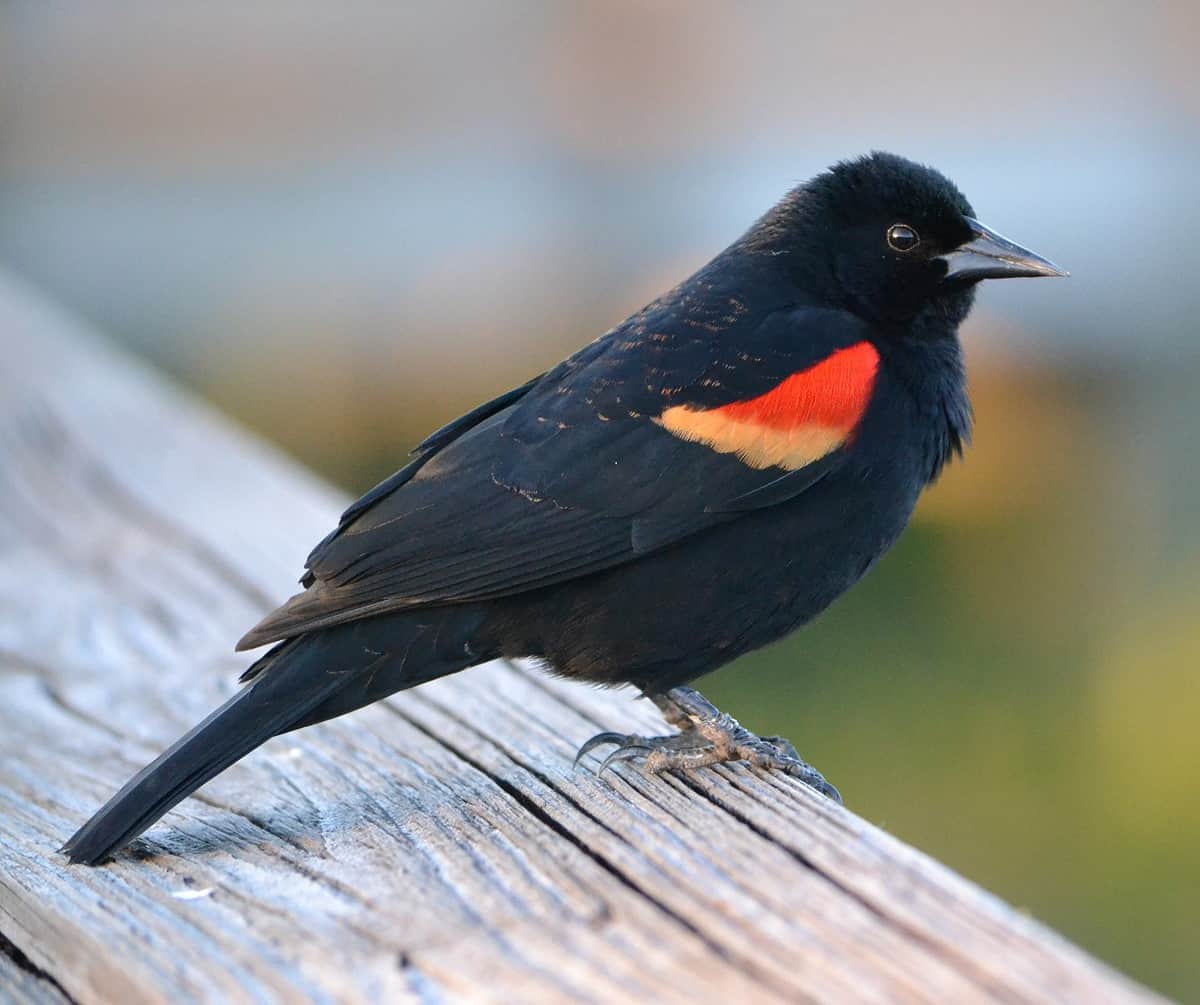
With the scientific name Agelaius phoeniceus, the Red-winged Blackbird is a widely encountered bird species in North America. Males of this species are easily recognizable, showcasing striking crimson and yellow “shoulders” that stand out against their dark bodies. In contrast, females display a brown coloration with light streaks, presenting a distinct appearance from the males. It’s worth noting that male Red-winged Blackbirds are polygynous, often mating with up to 15 different females. However, this species can form large flocks that swiftly consume seed at feeders.
Delaware serves as a year-round habitat for Red-winged Blackbirds, where they can be commonly observed.
Red-winged Blackbirds are known to visit various types of feeders, consuming both seed and suet. Their presence adds a lively touch to bird feeding stations.
6. WHITE-BREASTED NUTHATCH
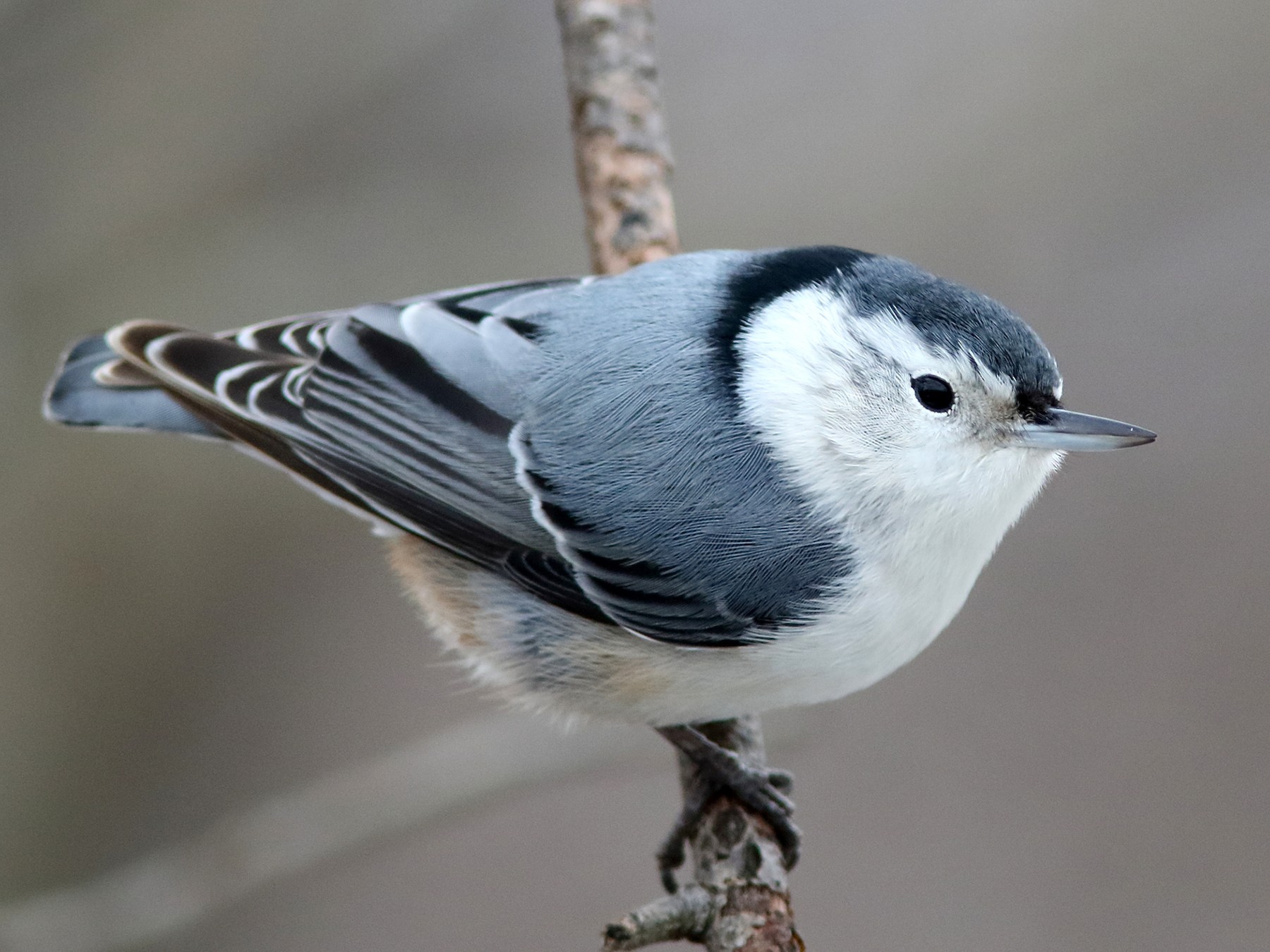
With the scientific name Sitta carolinensis, White-breasted Nuthatches are a common sight in many backyards within their range. These adept feeder birds showcase remarkable foraging skills as they crack open seeds using their sharp, chisel-like beaks and stash them beneath tree bark. Furthermore, their ability to navigate tree trunks is particularly impressive compared to other bird species.
White-breasted Nuthatches display a distinct appearance with a white head adorned with a black stripe on top. Their sides and bellies also exhibit white plumage. These birds possess a longer beak compared to most other feeder birds, which aids them in their feeding habits. Their wings primarily feature shades of gray and black.
Delaware residents have the pleasure of observing White-breasted Nuthatches throughout the year, as they can be found across the state. These charismatic birds bring charm to backyard birdwatching and provide delightful encounters for nature enthusiasts.
7. AMERICAN ROBIN

The American Robin, scientifically known as Turdus migratorius, is a familiar sight in backyards, frequently observed hopping across the grass in search of worms and other small invertebrates as their primary food source. While they are commonly seen in residential areas, during the winter season, they tend to retreat into wooded areas. With the arrival of spring, they migrate back to more open regions, creating a noticeable pattern. Although robins typically do not rely on seeds as a main food source, they may occasionally consume them. Their distinctive features include bright orange bellies, yellow beaks, and robust proportions, making them easily recognizable.
In Delaware, robins can be found throughout the year, adding a touch of charm to the state’s natural surroundings.
To attract American Robins to seed feeders, consider offering mealworms, planting native fruit-bearing plants, or providing a bird bath. These enticing elements can entice robins, allowing you to observe their fascinating behaviors up close.
8. MOURNING DOVE
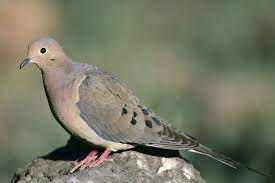
The Mourning Dove, scientifically known as Zenaida macroura, is a familiar sight in backyard environments. These doves can often be observed perched on telephone poles or gathered in trees, much like robins. They frequently roam around on the ground below hanging bird feeders, although I occasionally spot them on my tray feeder. Mourning doves feature pink legs and a predominantly gray plumage with black markings on top. Both males and females exhibit the same appearance.
Delaware residents have the opportunity to witness Mourning Doves throughout the year, as they are present in the state.
While dove feeders are commonly used, Mourning Doves primarily forage on fallen seeds from the ground. To attract them, you can scatter some seeds on the ground or utilize a ground feeder with a blend of mixed seeds. Providing this feeding option will entice these graceful birds to visit and enjoy a meal.
9. EUROPEAN STARLING
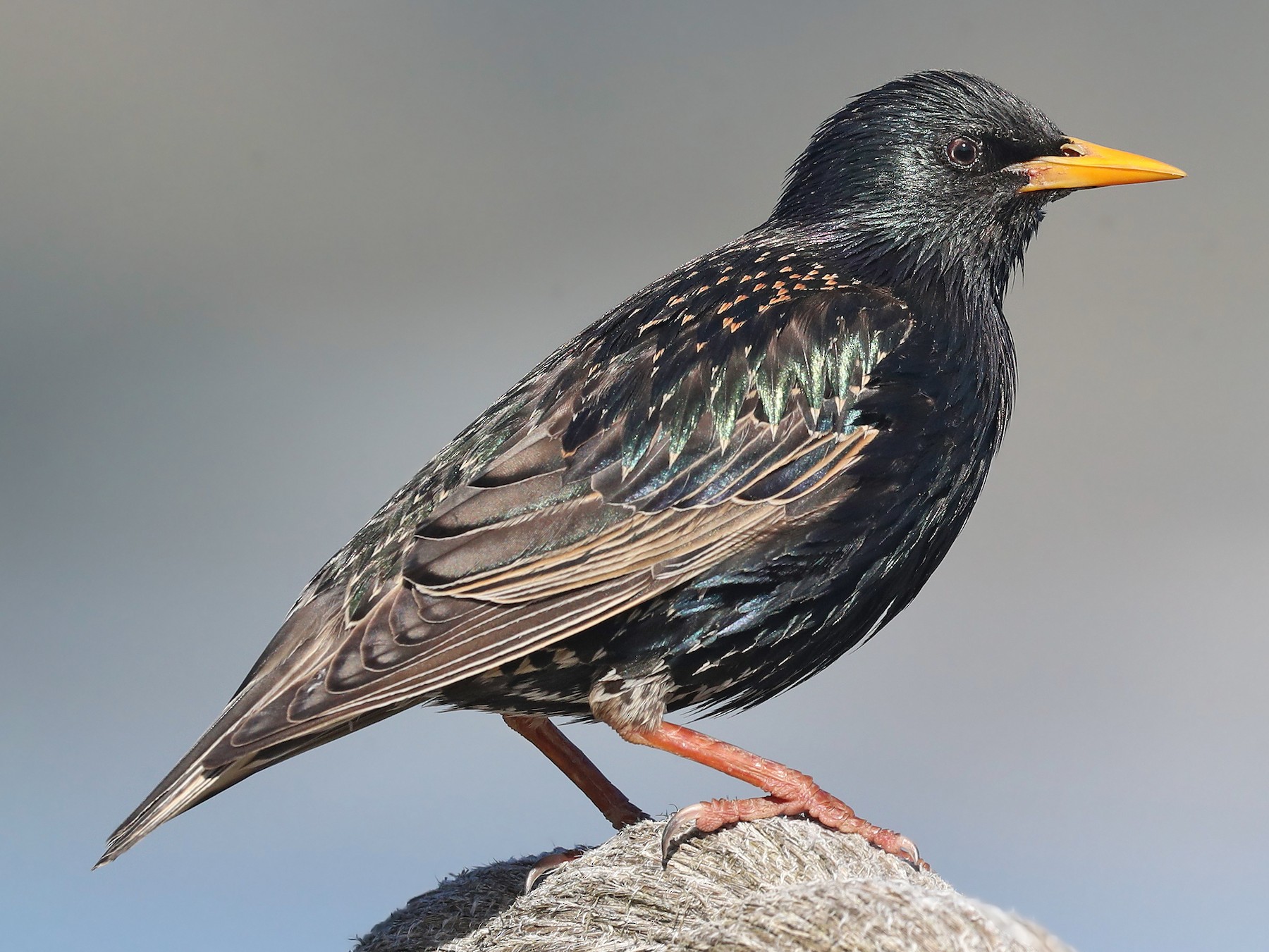
The European Starling, scientifically known as Sturnus vulgaris, was introduced to the United States in the 1890s with the release of 100 individuals in New York. However, since then, they have become invasive and spread extensively across the country. These birds pose a threat to other species as they compete for nesting sites, prey on their young, and even intrude into feeders intended for other birds. Sporting yellow beaks and feet, European Starlings exhibit predominantly dark plumage with white specks adorning their backs and wings. In certain lighting conditions, their feathers may display a captivating iridescence of purple and green hues.
European Starlings can be found throughout the year in every state across the United States, with the exception of Delaware.
These adaptable birds have a diverse diet and can consume a wide range of food. However, due to their invasive nature, it is recommended not to actively try attracting them, as they are likely to appear regardless. It’s important to prioritize the well-being of native bird species and ecosystems when it comes to managing European Starlings.
10. AMERICAN GOLDFINCH
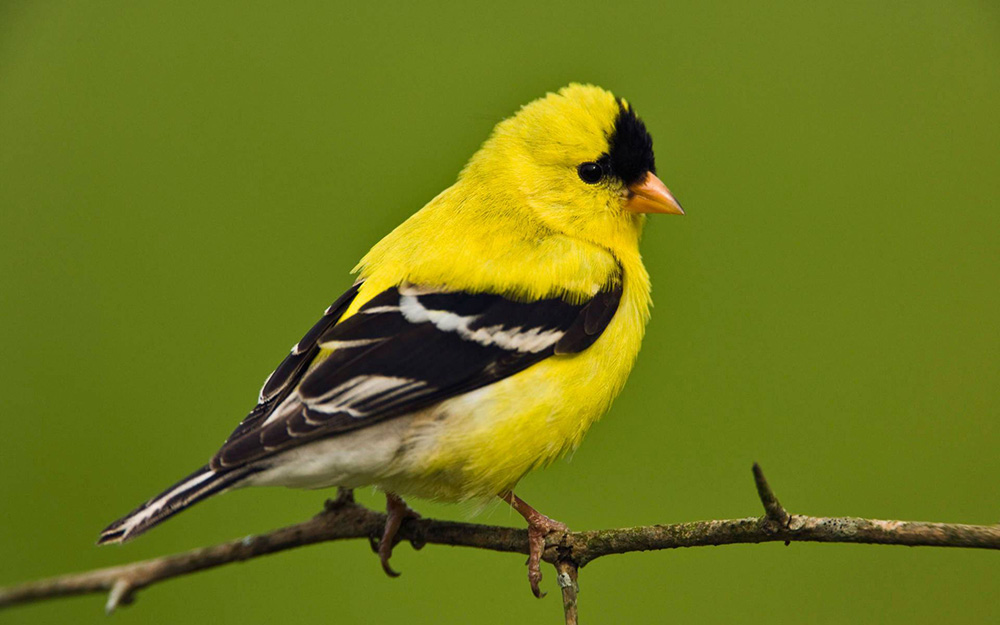
The American Goldfinch, scientifically known as Spinus tristis, is a delightful bird to observe, especially during the spring and summer seasons when their bright yellow plumage adorns the landscape. They are among my personal favorites to watch at feeders during this time. During this period, they display yellow wings with black-tipped feathers, and the males also boast a black “hat” atop their heads. However, in winter, they undergo a molt and transition to a more subdued coloration, with shades of brown or olive dominating their plumage. This change often leads to mistaken identity, as they can appear quite different from their vibrant summer selves. Nonetheless, their distinctive features such as black wings with white bars and their finch-like beaks are always visible when they take flight.
Delaware residents have the pleasure of encountering American Goldfinches throughout the year, as they are present in the region.
To attract goldfinches, thistle (nyjer) feeders are the preferred option. Alternatively, sunflower chips can also entice them, but using a thistle feeder is the best approach to successfully attract these charming birds. Their presence adds a touch of vibrancy to any bird feeding station.
11. HOUSE FINCH
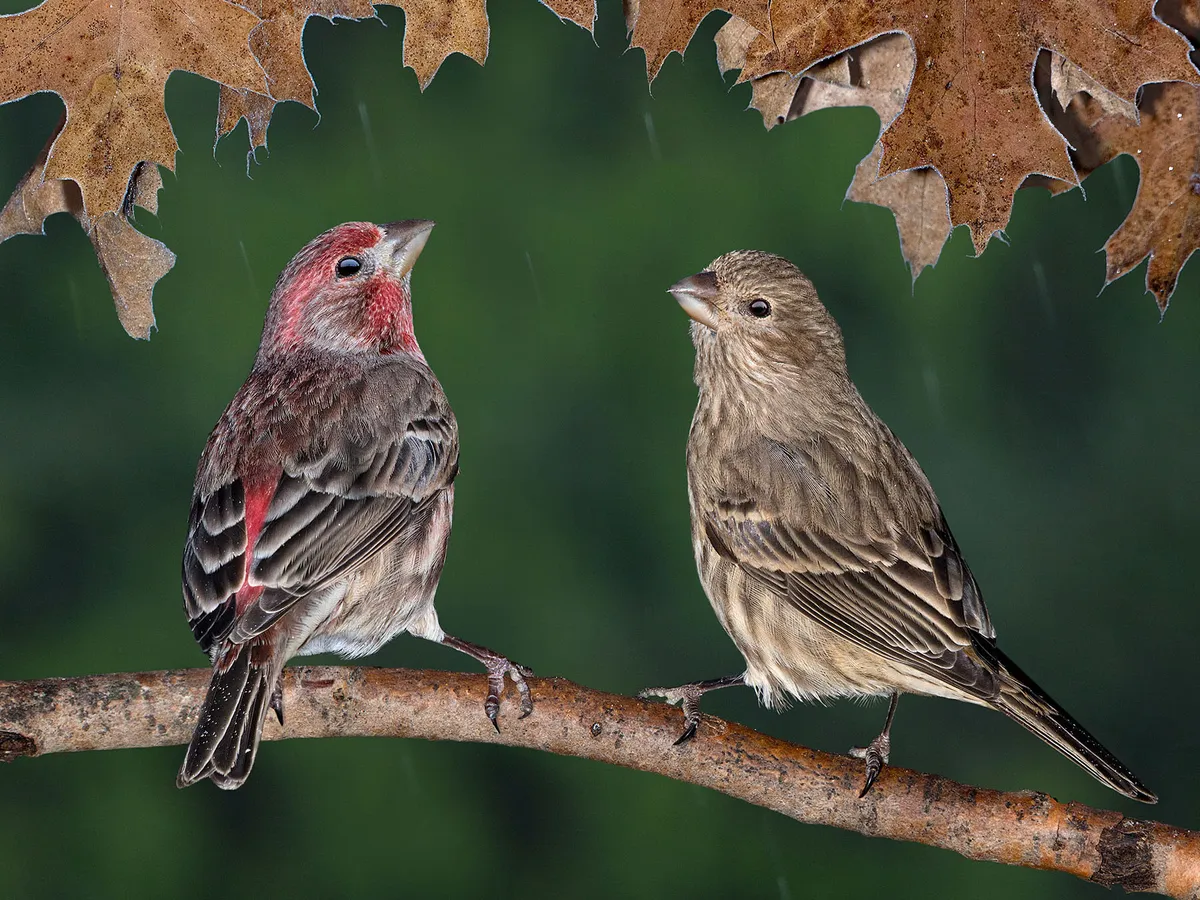
The House Finch, scientifically known as Haemorhous mexicanus, is a commonly observed backyard bird in Delaware. Unlike House Sparrows, they are not as disliked, and they do not create the same troubles caused by sparrows, despite being invasive in the eastern region. House Finches have the tendency to gather in large flocks and can swarm your feeders if you attract them, which is relatively easy to do. These finches exhibit a brown coloration with extensive white streaking, a feature shared by both males and females. However, the males display a striking splash of crimson on their head, chest, and back.
House Finches can be found throughout Delaware at any time of the year, adding liveliness to the local bird population.
Black sunflower seeds or mixed seed blends are favored by House Finches, and they will readily consume them. Additionally, like other finches, House Finches are attracted to thistle feeders, providing another option to entice their presence. Observing these finches’ vibrant plumage and lively behavior is a delightful experience for bird enthusiasts.
12. HOUSE SPARROW
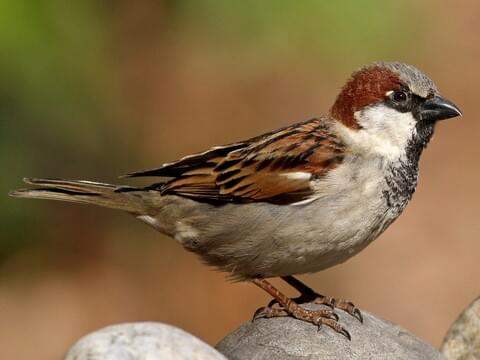
The House Sparrow, scientifically known as Passer domesticus, is another type of wild bird found in the United States, although they are often considered pests. Alongside European Starlings, which can be captured and humanely dealt with, House Sparrows were also introduced in the 1800s and have rapidly spread across the country as an invasive species. Their wings and buffy chest display streaks of black and brown, while their overall plumage is predominantly brown. Males of the species are often distinguished by their black masks and chests. House Sparrows tend to exhibit aggressive behavior towards other birds, particularly when it comes to nests and birdhouses.
It’s important to note that House Sparrows, like European Starlings, are invasive species that pose a threat to native bird species. They have a varied diet and will consume most types of seeds available.
Due to their invasive nature and potential negative impact on native bird populations, it is advisable to take precautions and prevent their proliferation. By being mindful of the potential risks associated with House Sparrows, we can help protect and preserve our native bird species and maintain a balanced ecosystem.
13. NORTHERN MOCKINGBIRD
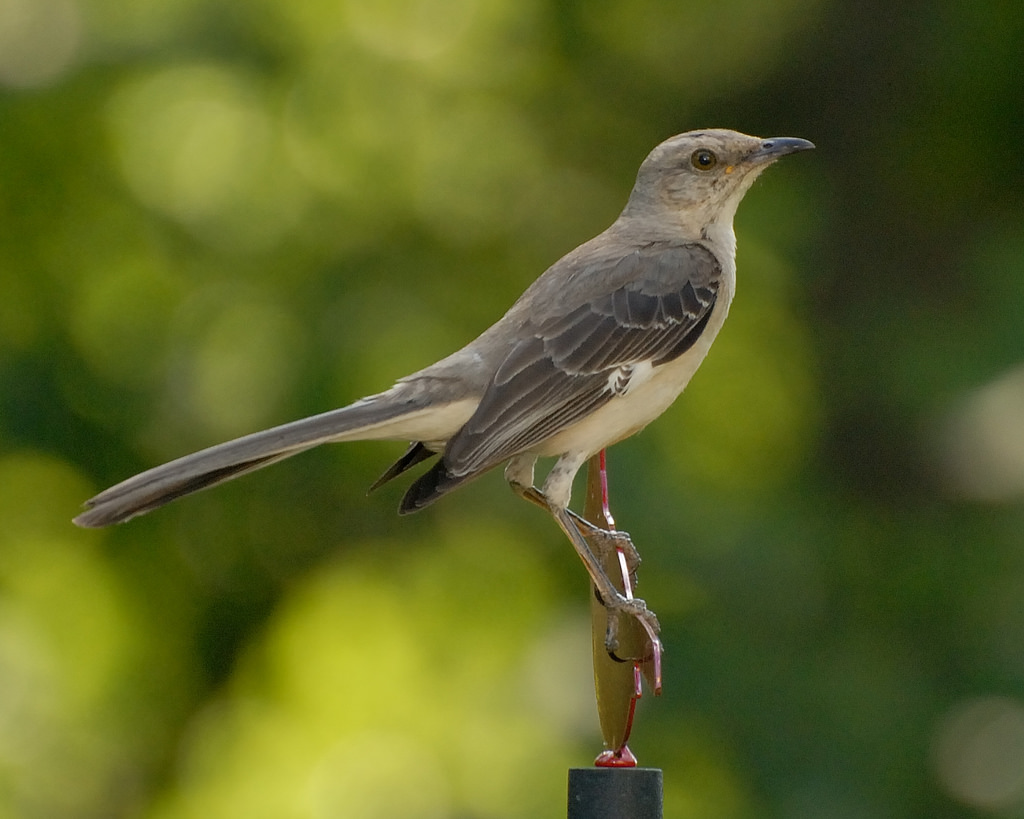
The Northern Mockingbird, scientifically known as Mimus polyglottos, owes its name to its remarkable ability to mimic the songs of other birds. It is estimated that a male mockingbird can acquire and perform up to 200 distinct songs over its lifetime. These medium-sized birds possess elongated tail feathers and exhibit predominantly gray and white plumage. They are often spotted perched in tall bushes and have a reputation for being territorial and harassing other outdoor birds.
Northern Mockingbirds can be found year-round in the state of Delaware, adding their melodious repertoire to the local avian population.
While bird feeders are common in the backyards of Northern Mockingbirds, they do not visit them as frequently. To attract these charming birds, you can try other methods such as planting fruit-bearing bushes or providing a bird bath. These enticing features can draw Northern Mockingbirds to your yard, providing opportunities to observe their delightful mimicry and appreciate their presence.
14. COMMON GRACKLE
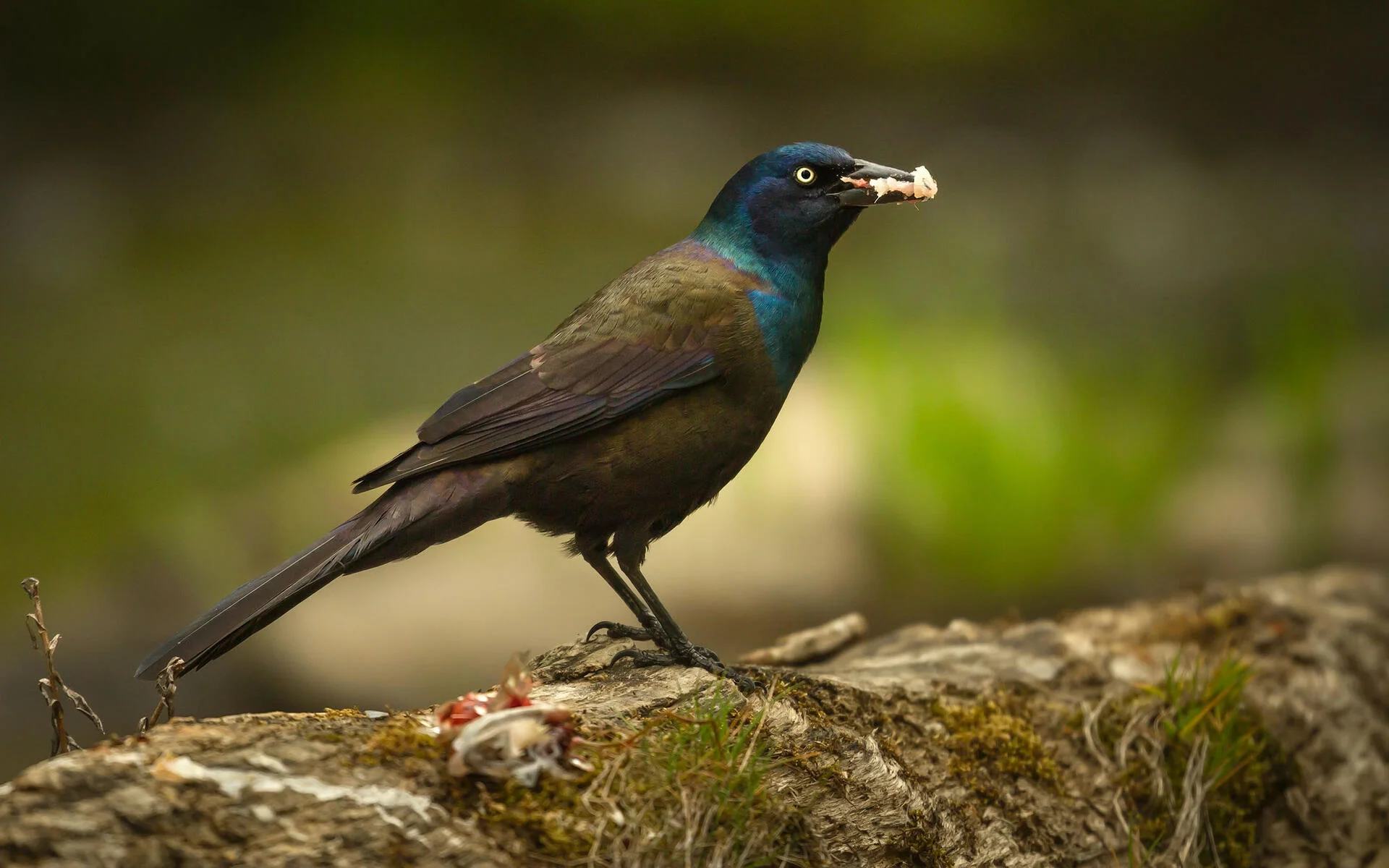
The Common Grackle, scientifically known as Quiscalus quiscula, possesses a unique appeal, especially when their iridescent feathers catch the light. Despite being categorized as a “bully bird” similar to the starling, they showcase an intriguing color palette. While their overall appearance is primarily black, in bright light, shades of blue, green, brown, and purple may be observed. Grackles are known to gather with other blackbird species in massive roosts, forming flocks that can number in the millions. Their distinct features include a solid-colored body, elongated slender physique, and a yellow ring around their eyes, making them easily distinguishable.
In Delaware, Grackles can be found throughout the year, adding their charismatic presence to the local bird population.
Grackles are often regarded as pests due to their foraging behavior, as they have an opportunistic diet and will consume a wide range of food items. Their adaptable nature and ability to eat almost anything can lead to encounters with human settlements and agricultural areas, which sometimes results in conflicts.
15. SONG SPARROW
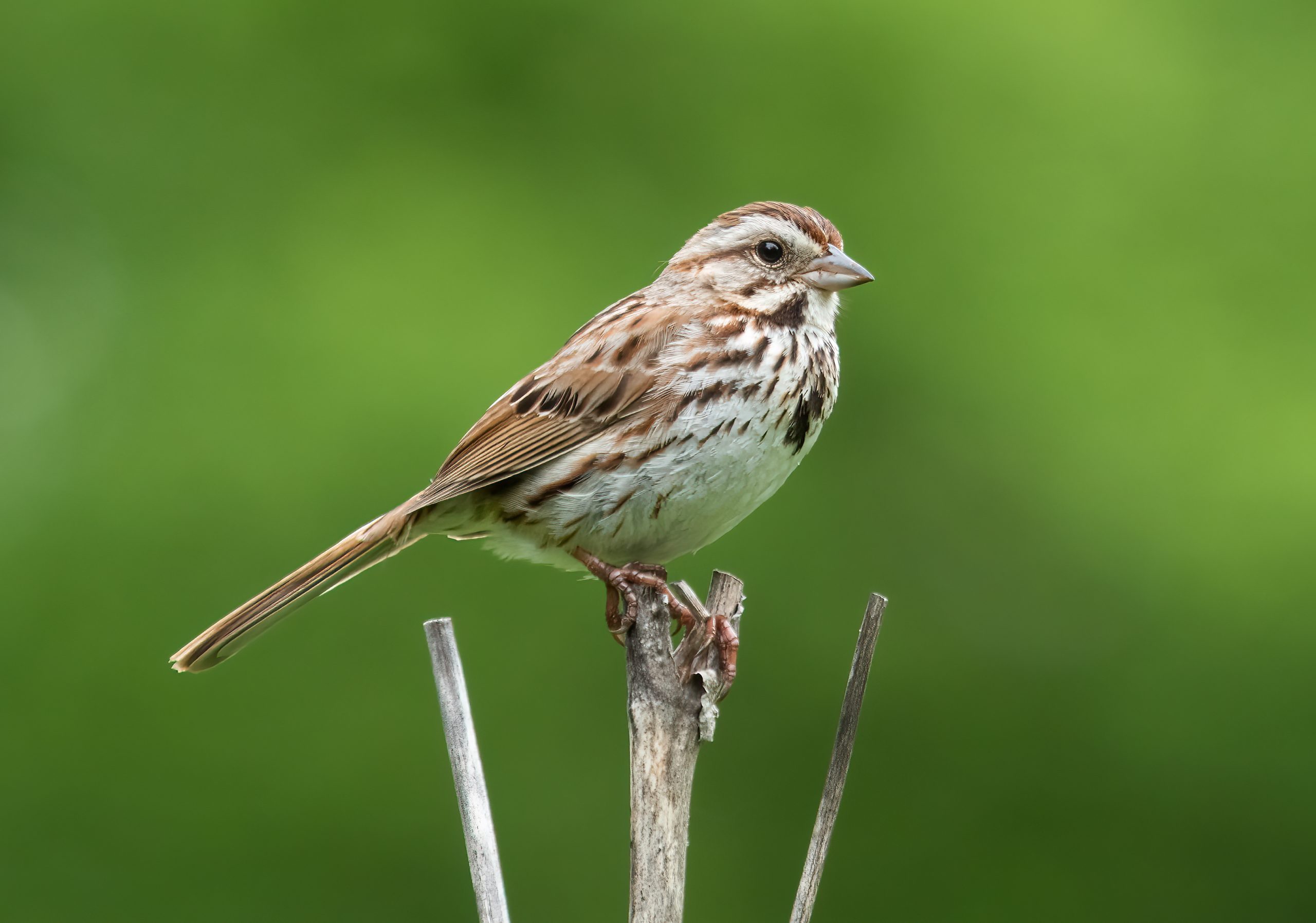
The Song Sparrow, scientifically known as Melospiza melodia, is a widely distributed bird species found throughout most of North America. Their plumage can exhibit variations depending on the region. In the eastern part of their range, Song Sparrows display predominantly brown coloring on their back and wings, accompanied by pronounced brown streaks on their chest and a white belly. These streaks often converge to form a distinct brown spot, aiding in their identification. The male Song Sparrow utilizes his melodious song not only to attract females but also to defend his territory.
In Delaware, Song Sparrows can be observed year-round, although they are known to move around frequently within their habitat.
While Song Sparrows primarily forage for natural food sources, they may occasionally visit bird feeders and consume mixed seeds or sunflower seeds. Providing these food options can entice them to visit and offer an opportunity to observe their charming presence up close.
16. Melanerpes carolinus
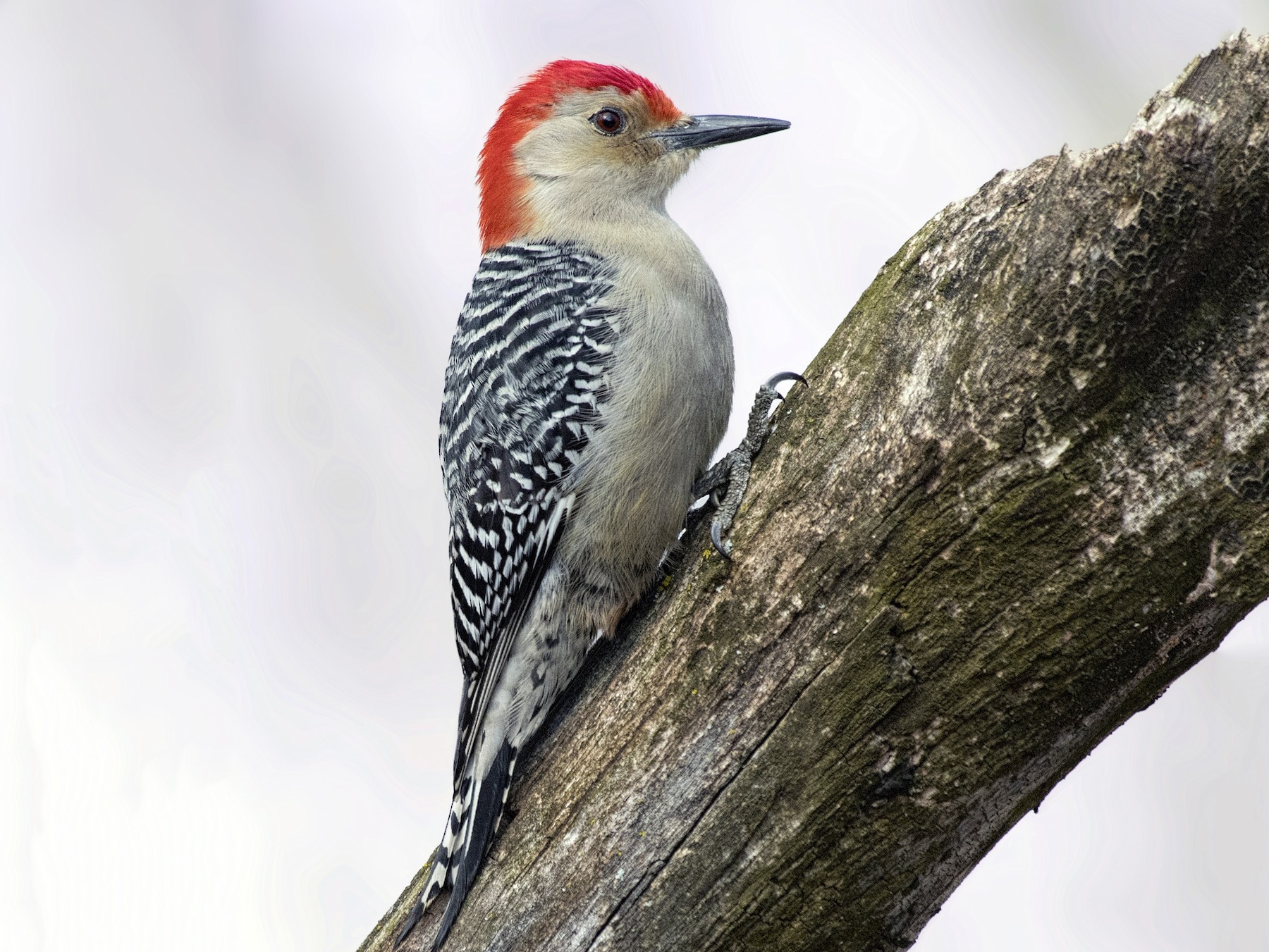
The Red-bellied Woodpecker, scientifically known as Melanerpes carolinus, is a medium-sized woodpecker species commonly encountered in the eastern United States, often visiting feeders and backyards. Despite their name, the prominent bright red stripe running down the back of their heads is usually the first feature that catches the eye. Their “belly” is not actually red but rather has a pinkish-red patch in the center, although it may not always be visible. They display a white breast and are easily identified by the white and black barring on their wings.
Delaware residents have the pleasure of observing Red-bellied Woodpeckers throughout the year, as they are present in the region.
While Red-bellied Woodpeckers may occasionally visit seed feeders, especially when provided with combinations that include peanuts, the best way to attract them is through a suet feeder. Offering suet, which is a high-energy food source, can entice these woodpeckers to visit your yard, providing opportunities to witness their fascinating behaviors and appreciate their unique beauty up close.
17. DOWNY WOODPECKER

The Downy Woodpecker, scientifically known as Picoides pubescens, is a familiar sight at backyard bird feeders. As one of the smallest woodpecker species in North America, they often catch my attention as one of the first birds to visit a new feeder. They possess distinct features that make them easy to identify, including totally white underbodies, black wings adorned with white dots, black and white striped heads, and a red spot on the back of their heads (which is absent in females). While Downy Woodpeckers are smaller in size with shorter beaks compared to the Hairy Woodpecker, they bear a close resemblance to their larger counterpart.
Downy Woodpeckers can be found year-round throughout the entire state of Delaware, bringing their lively presence to the region.
These woodpeckers are commonly observed at various types of bird feeders. To attract them, offering a variety of food options is recommended. They readily consume mixed seeds, black sunflower seeds, and suet. By providing these enticing food sources, you can enjoy the frequent visits of Downy Woodpeckers and observe their distinctive behaviors up close.
18. CAROLINA WREN
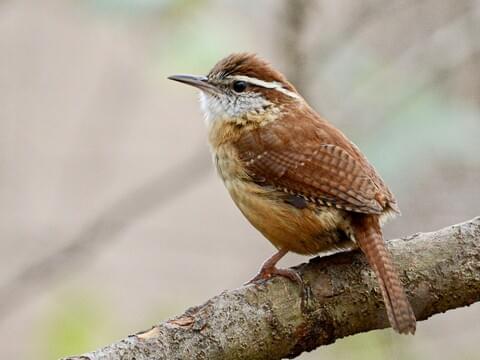
The Carolina Wren, scientifically known as Thryothorus ludovicianus, is a charming little bird with distinctive features. They typically exhibit a reddish-brown coloration on their upper parts, while their underparts are light orangish. These wrens are characterized by their slightly long and curved beaks, as well as a prominent white “eyebrow” marking above their eyes. Although they prefer to hide in bushes and shrubs, their loud and melodious “teakettle-teakettle” call is sure to catch your attention.
Carolina Wrens can be observed in Delaware throughout the year, adding their delightful presence to the local bird population.
When it comes to attracting Carolina Wrens to your backyard, suet feeders are a popular choice. These wrens are frequent visitors to suet feeders, enjoying the high-energy food source they provide. By offering suet, you can increase the chances of welcoming these lovely birds to your feeding station, allowing you to appreciate their beauty and enjoy their melodious songs.
19. EASTERN TOWHEE
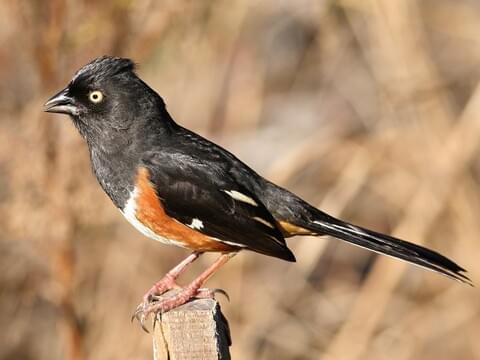
The Eastern Towhee, scientifically known as Pipilo erythrophthalmus, is a delightful backyard bird that never fails to bring joy when observed. Both males and females have dark heads and backs, adorned with white wing patches, orange flanks, and a white belly. However, males possess a deep black coloration, while females display a rich brown hue. During the spring and summer, they fill the woods with their lovely songs, characterized by warm tones. Eastern Towhees are skilled foragers, meticulously searching through leaf litter, vegetation, and even berries in their quest for insects and seeds. Maintaining brushy edges and leaving leaf litter in your yard can increase your chances of attracting these charming birds.
Delaware provides a year-round home for the Eastern Towhee, ensuring their presence throughout the seasons.
From my experience, Eastern Towhees do not frequent bird feeders as much, although I have often observed them hopping around the ground beneath my feeders. However, this does not mean that bird feeders cannot attract towhees. By offering a diverse and natural food supply, such as scattered seeds and providing a welcoming habitat, you can create an environment that may entice Eastern Towhees to visit your yard.
20. DARK-EYED JUNCO

The Dark-eyed Junco, scientifically known as Junco hyemalis, is often referred to as a winter bird in the United States since they spend their summers in Canada. These birds showcase a range of colors across different regions of the country. In the eastern part of the United States, the slate-colored variety is commonly observed, characterized by its dark gray head, chest, back, wings, and tail. A distinguishing feature of juncos is their white belly, extending down to the tail. Females can exhibit variations in color, ranging from gray to buffy brown. When identifying juncos, their pale pink beaks and rounded body shape are notable characteristics. These birds can often be seen hopping around on the ground in forests and wooded areas.
Dark-eyed Juncos can be found in Delaware only during the winter months, adding a touch of seasonal charm to the region.
While juncos may occasionally visit feeders, they predominantly prefer to feed on the ground beneath the feeders, where other birds have dropped seeds. They appreciate mixed seeds as a food source. To attract juncos, ensuring a suitable ground feeding area with scattered mixed seeds can be effective. Observing these delightful birds foraging and interacting with other avian visitors can bring joy to any birdwatching experience.
21. WHITE-THROATED SPARROW
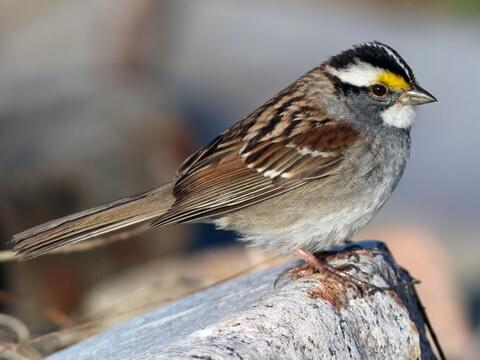
The White-throated Sparrow, scientifically known as Zonotrichia albicollis, is a widespread species found across most of the United States. These sparrows exhibit an interesting migratory pattern, traveling to Canada during the summer months to breed before returning to their winter grounds. They can be easily identified among sparrows due to their distinctive facial pattern, which includes a bold black and white stripe and yellow spots between the eyes. Another notable feature is their white throat patch. Female White-throated Sparrows prefer nesting in secluded areas of thickets and vegetation, often on or slightly above the ground.
During the winter months, Delaware becomes home to White-throated Sparrows, enriching the local bird population.
White-throated Sparrows occasionally visit feeders, particularly to gather fallen seeds. Providing a variety of food options can attract these sparrows to your feeding station. They particularly enjoy sunflower seeds, millet, and assorted seed blends. By offering these enticing food sources, you increase the chances of welcoming White-throated Sparrows to your backyard and have the opportunity to observe their unique behaviors and charming presence.
22. NORTHERN FLICKER
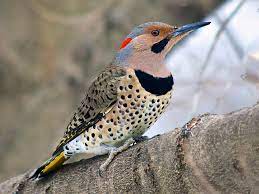
The Northern Flicker, scientifically known as Colaptes auratus, is a medium to large-sized woodpecker that can be found in backyards across the United States, although they are not particularly common visitors to feeders. In my personal opinion, they are among the most captivating birds in North America. Unlike other woodpeckers, Flickers have a preference for finding insects on the ground rather than in trees, making them primarily ground foragers. They display distinctive features such as black spots on their bellies, a solid black bib, a red patch on the back of their necks, and black and gray barred wings. Males also possess a black “beard” and mustache. In Delaware, the local variant of Northern Flickers showcases vibrant yellow feathers on the underside of their wings and tail, earning them the name “yellow-shafted” variety.
Throughout the year, Northern Flickers grace Delaware with their presence, adding their unique charm to the region.
While other woodpecker species may spend more time visiting feeders, Northern Flickers can also be observed at suet feeders. If you have leaf piles in your yard, you might even catch them digging for insects, showcasing their natural foraging behavior. Providing a suet feeder and maintaining suitable habitats can increase the chances of attracting these fascinating woodpeckers to your backyard, offering opportunities to witness their distinctive feeding techniques and appreciate their beauty up close.
23. GRAY CATBIRD
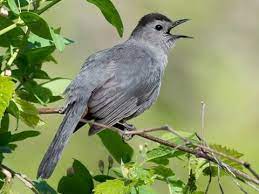
The Gray Catbird, scientifically known as Dumetella carolinensis, is a small bird with a distinctive appearance. They possess a black head and a long tail, with their entire body covered in dark slate gray feathers. Often overlooked, a rusty red patch can be observed just below their tails. Catbirds have a preference for fruits, making them fruit-loving birds. To attract them to your yard, providing nearby fruit-bearing trees and shrubs is recommended. Their vocalizations resemble the meowing of a cat, hence their name “catbird.”
In most states, Gray Catbirds are only present during the summer season. However, Delaware stands out as a location where they can be found throughout the year.
While offering sweets, berries, and other sweet food items may help attract catbirds, they primarily forage for food on the ground or in bushes. Creating a suitable habitat with natural food sources and vegetation can entice these delightful birds to visit your yard. Observing their unique behaviors and listening to their melodious calls can bring a sense of joy and wonder to any nature enthusiast.
24. AMERICAN CROW
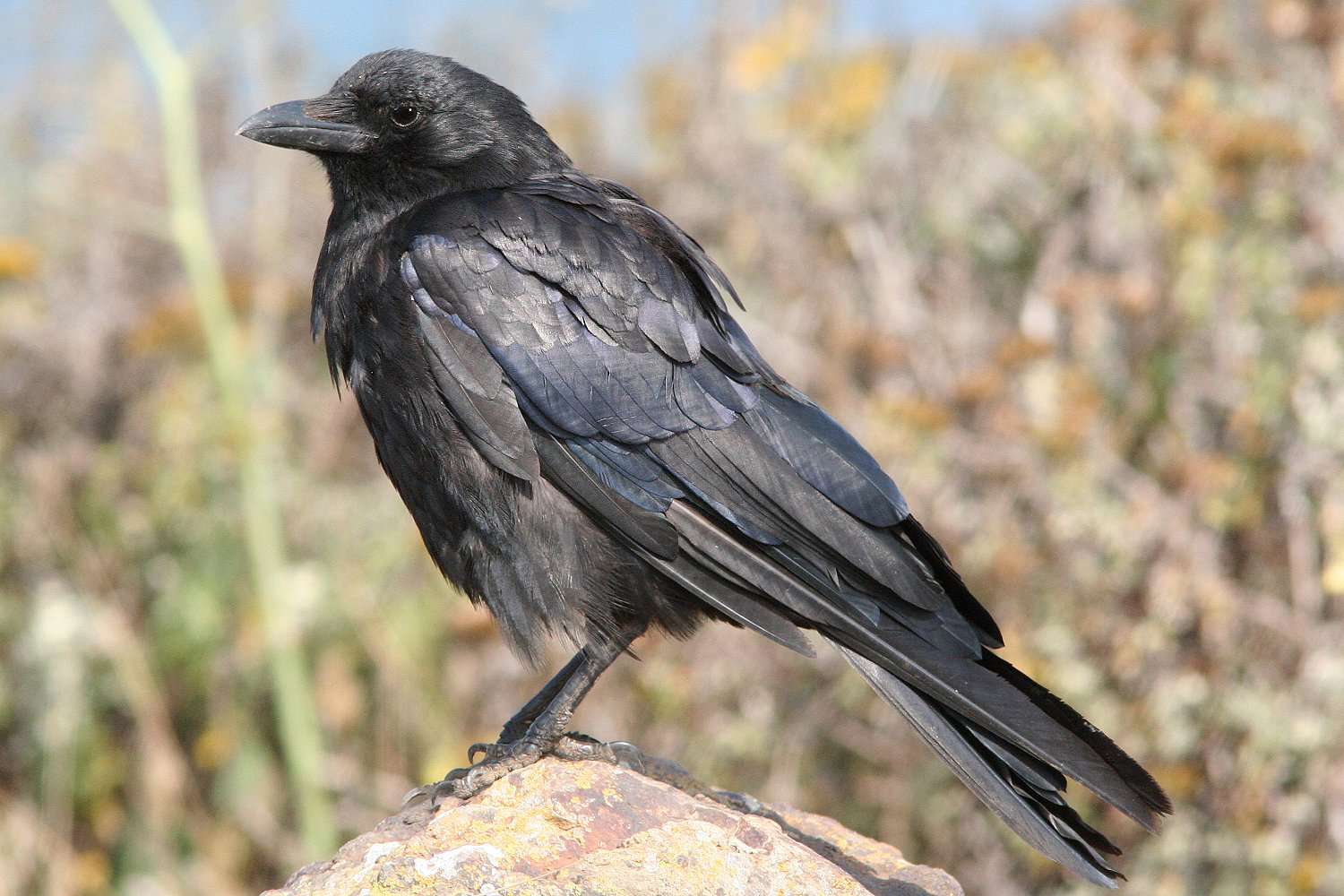
American Crows, scientifically known as Corvus brachyrhynchos, are striking birds with a deep black plumage and a significant size. Similar to their close relative, the raven, they are renowned for their problem-solving abilities. When gathered in large numbers, crows often roost high up in the treetops, granting them a panoramic view from above. This vantage point enables them to observe the surroundings and promptly alert the flock with loud vocalizations if they detect the presence of owls or hawks, indicating potential danger.
Throughout the year, American Crows can be observed across the entirety of Delaware, bringing their distinct presence to the region.
Due to their size and adaptability, American Crows rarely visit bird feeders. Their dietary preferences and foraging behaviors are diverse, encompassing a wide range of food sources. While crows may not frequently engage with bird feeders, their intelligence and resourcefulness make them fascinating to observe in their natural environment. Appreciating their aerial acrobatics and communal interactions can be a rewarding experience for any bird enthusiast.
HOW TO ATTRACT BIRDS TO YOUR YARD
Are you interested in attracting these wonderful birds to your yard? Here are five simple tips to get you started:
- SET UP BIRD FEEDERS
Placing bird feeders in your yard is the easiest and most effective way to attract birds. You can choose from various feeder types, such as tube feeders, hopper feeders, platform feeders, or window feeders. These feeders provide a convenient food source for birds and will entice them to visit your yard. Check out the following sections for more ideas.
- PROVIDE A WATER SOURCE
Offering a water source is crucial for attracting birds. It can be as simple as a terra cotta flower pot saucer or as elaborate as a pedestal birdbath. Birds require water not only for bathing but also for drinking. By incorporating a water feature in your yard, you increase the likelihood of attracting birds. Consider adding a solar fountain, as the sound and movement of flowing water can be particularly appealing to birds.
- INSTALL BIRDHOUSES
By placing birdhouses in your yard, you can provide nesting opportunities for various bird species. Eastern Bluebirds, for example, readily occupy birdhouses when positioned correctly at the appropriate time of year. It’s amazing how quickly bluebirds can show interest in a newly installed birdhouse. Keep an eye out for these delightful encounters.
- CREATE SHELTER
Birds need shelter in the form of trees, plants, and shrubs to feel secure and protected. These provide them with places to hide or seek refuge when they sense danger, with predators being their primary concern. If your yard lacks mature trees due to being in a new subdivision, consider adding landscaping elements that will offer birds a sense of safety and security.
- INCORPORATE NATIVE PLANTS
Native plants that produce nuts, berries, and seeds are a great addition to attract a wide variety of birds. These plants provide a natural food source that many birds rely on. Additionally, native plants support insects like caterpillars, which are essential food for songbirds and play a role in their nesting cycles. Avoid non-native and invasive plants, as they can disrupt the natural balance. Encourage the growth of native flora in your yard to enhance its appeal to birds.
By following these five tips, you can create a bird-friendly environment that will attract and support a diverse array of bird species in your yard. Enjoy the beauty and joy of observing these feathered visitors as they make your outdoor space their home.
10 DIFFERENT TYPES OF BIRD FEEDERS
In many yards, you’ll find a variety of popular bird feeders. Let’s explore ten of them:
- Hopper Feeders: These feeders have a central hopper that holds bird seed. They often resemble houses and feature perches on both sides for birds to feed. Choose black sunflower seeds or a seed blend for this type of feeder. Consider using a squirrel-proof hopper feeder for added convenience.
- Platform Feeders: Open and tray-like, these feeders can be hung from a tree, hook, or pole. They are versatile and attract a wide range of birds. Keep in mind that any animal can access the seed in a platform feeder. Black sunflower seeds or a seed blend are suitable options. Currently, I’m using a platform feeder in my yard.
- Tube Feeders: These transparent tube-shaped feeders come in various sizes, holding from a few cups to several pounds of seed. They allow for easy refilling and keep the seed fresh and dry. Tube feeders attract a variety of bird species. Use them for black sunflower seeds and seed blends. Squirrel Buster offers excellent squirrel-proof tube feeders.
- Suet Cake Feeders: Specifically designed for suet cakes, these feeders consist of a wire cage with a tail prop for larger birds. Woodpeckers are particularly fond of suet feeders during winter when they seek high-fat foods. Consider using a suet feeder with a long tail prop to attract larger woodpeckers like Pileated and Northern Flickers.
- Window Feeders: These small feeders can be attached to a glass window using suction cups. They have a tray-like design where you pour seed from the top. Window feeders are ideal for those with limited garden space and are popular among various bird species. Use black sunflower seeds or seed blends. The highly regarded window feeder on Amazon is a great choice.
- Thistle Feeders (Nyjer Feeders): These specialized feeders are perfect for dispensing thistle seed. They attract finch species such as American Goldfinches and House Finches. Thistle feeders are typically circular with small openings along the circumference for birds to access the thistle seed. Check out the excellent thistle feeder by Droll Yankees.
- Ground Feeders: Similar to tray feeders, ground feeders sit directly on the ground surface. Birds like Mourning Doves and Juncos, as well as ground-dwelling creatures, will enjoy them. Use black sunflower seeds or seed blends. Consider the eco-friendly option of a recycled plastic ground feeder.
- Oriole Feeders: These feeders are designed for orioles and often come with plastic or glass dishes for holding jelly, a favorite of orioles. You can also offer orange halves to attract orioles. A simple oriole feeder with four jelly trays is a great choice.
- Hummingbird Feeders: Hummingbird feeders are specifically designed to offer sugar water, resembling nectar, for hummingbirds. Although meant for hummingbirds, other birds like Downy Woodpeckers may also visit. You can easily make hummingbird nectar without boiling water. Remember, simple and cost-effective hummingbird feeders work just fine.
- Peanut Feeders: These tube-shaped feeders, often made of wire mesh, are similar to thistle feeders. They have slightly wider gaps in the mesh to accommodate whole unshelled or shelled peanuts. Fill them with peanuts to attract birds like Blue Jays. Consider using a Squirrel Buster to deter squirrels. A basic peanut feeder like the one mentioned will suffice in most cases.
With these ten types of bird feeders, you can create a diverse and inviting feeding station
BIRD WATCHING IN DELAWARE
If you’re an avid bird enthusiast in Delaware, you’re in luck! There are numerous opportunities for birding in the state. If you’re looking to enhance your birding experience, consider engaging with the Delaware Audubon Society, which offers meetups, workshops, field trips, and guided birding tours.
To help you discover new species and expand your life list, I’ve compiled a list of popular birding spots in Delaware exclusively for residents like you. These locations provide excellent opportunities to observe a wide variety of bird species.
